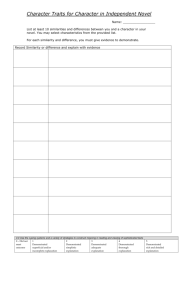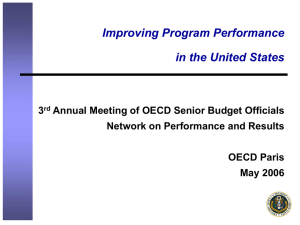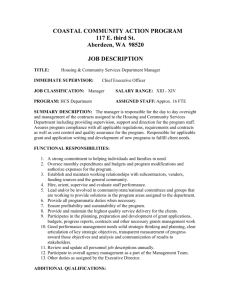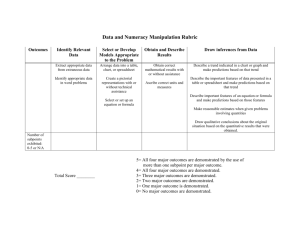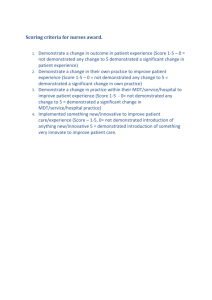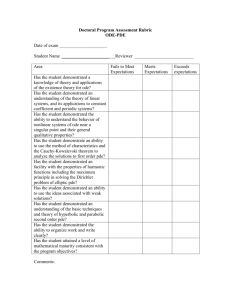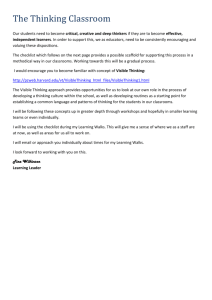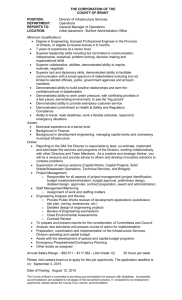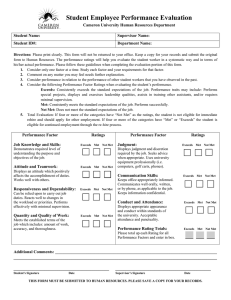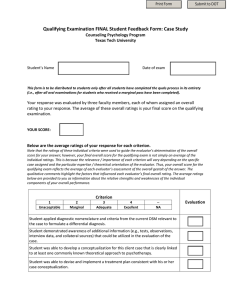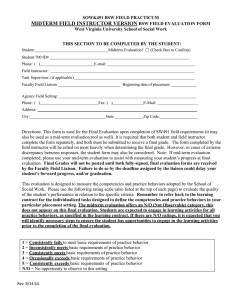27 Addressing Performance Issues
advertisement
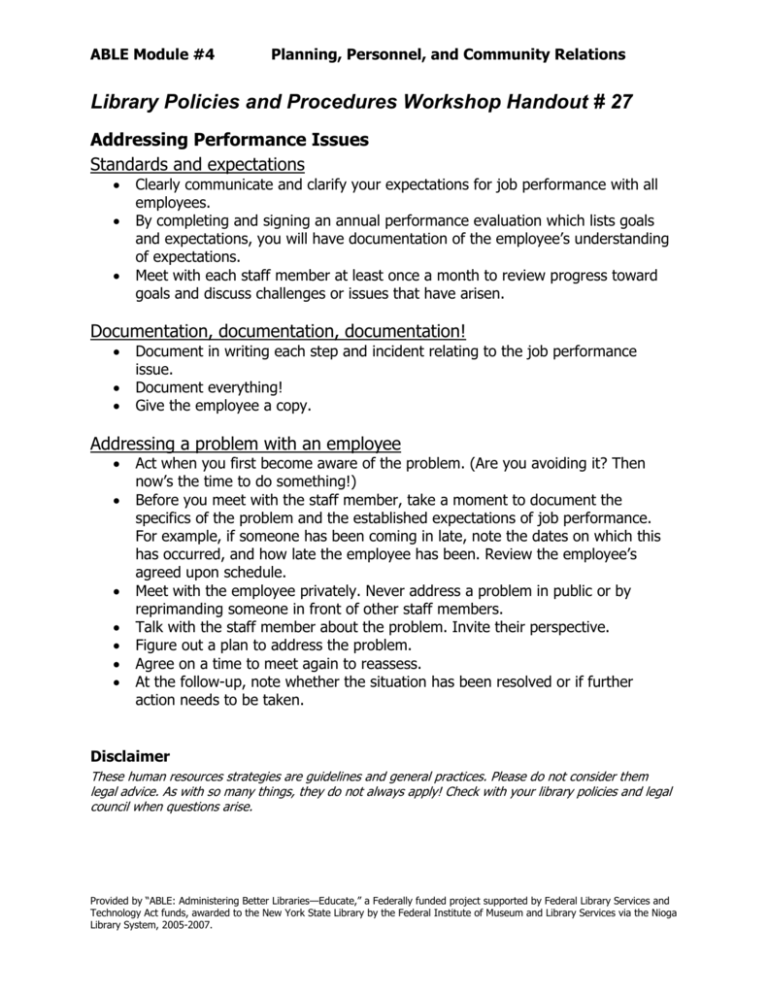
ABLE Module #4 Planning, Personnel, and Community Relations Library Policies and Procedures Workshop Handout # 27 Addressing Performance Issues Standards and expectations Clearly communicate and clarify your expectations for job performance with all employees. By completing and signing an annual performance evaluation which lists goals and expectations, you will have documentation of the employee’s understanding of expectations. Meet with each staff member at least once a month to review progress toward goals and discuss challenges or issues that have arisen. Documentation, documentation, documentation! Document in writing each step and incident relating to the job performance issue. Document everything! Give the employee a copy. Addressing a problem with an employee Act when you first become aware of the problem. (Are you avoiding it? Then now’s the time to do something!) Before you meet with the staff member, take a moment to document the specifics of the problem and the established expectations of job performance. For example, if someone has been coming in late, note the dates on which this has occurred, and how late the employee has been. Review the employee’s agreed upon schedule. Meet with the employee privately. Never address a problem in public or by reprimanding someone in front of other staff members. Talk with the staff member about the problem. Invite their perspective. Figure out a plan to address the problem. Agree on a time to meet again to reassess. At the follow-up, note whether the situation has been resolved or if further action needs to be taken. Disclaimer These human resources strategies are guidelines and general practices. Please do not consider them legal advice. As with so many things, they do not always apply! Check with your library policies and legal council when questions arise. Provided by “ABLE: Administering Better Libraries—Educate,” a Federally funded project supported by Federal Library Services and Technology Act funds, awarded to the New York State Library by the Federal Institute of Museum and Library Services via the Nioga Library System, 2005-2007. Performance Evaluation Samples Areas often evaluated: Approach to work Measures initiative, innovation, planning and organization, creative problem solving, leadership. Attendance Measures punctuality and dependability. Customer Service Measures demonstrated ability to work effectively with the public, including anticipating need, treating all patrons respectfully, positive demeanor, and protecting confidential information. Interpersonal Relations Measures demonstrated skills of working as part of a team, effective communication strategies (i.e., active listening), and conflict resolution. Communication is often its own category. Quality and Quantity of Work Measures productivity. May include work speed and accuracy, wise use of time, initiative, following directions, attention to detail, followthrough, innovation, adherence to deadlines, examples of projects/work accomplished. May evaluate specific areas of responsibility. Assess past year’s goals. Safety Measures demonstrated knowledge of safe work habits, use of equipment, emergency procedures. Technical Skills/Job Knowledge Measures demonstrated understanding and application of essential skills required to do the job, willingness to assist others when asked, and willingness/ ability to learn new skills when needed. Goals for the Year (including professional development) After reviewing the job description and employee performance, establish a few goals for the coming year. These may be in “areas of growth” (skills that need improvement or reflect new knowledge/skills to be acquired over the year). Include an action plan to help ensure goals are met. This may include participation in trainings or workshops. Common Ratings Not all styles of evaluation use rating systems. As they are often a component of the evaluation process, the following is a list of commonly used ratings. Not applicable The employee is not required to perform a specific skill or measured activity. Unacceptable/Expectations Not Met Consistently performs below defined expectations. Specific action plans must be developed to address issues. Needs Improvement/Approaching Acceptable Frequently performs below defined expectations or made improvement from previous evaluation, but not performing to expectations. Needs to demonstrate growth; Specific actions plans must be developed to address issues. Satisfactory/Meets Expectations/Proficient Consistent, solid work performance, consistently meeting standards of job performance, and at times exceeds expectations. Outstanding/ Exceeds Expectations Consistently performs above defined expectations. Thinks beyond the details of the job and contributes to the “big picture” of the library’s goals. Demonstrates leadership abilities, innovation, independence, and effective problem solving skills. Self-Evaluation/Employee Input May follow the same format of the supervisor’s evaluation. May ask employee to comment on: Major accomplishments and key contributions Overview of job responsibilities and how well performed Uncompleted goals/Things to improve, change, or learn – what impeded them, what might be done to help get them accomplished in the coming year (and evaluate if last year’s goals are still relevant.) Goals for coming year and suggested action plan Checklist for Creating a Productive Workplace Highly productive employees tend to agree with each of these statements. Including this checklist in an annual job performance review may help identify potential problems before they become unwieldy. (For example, if an employee is unsure what’s expected of him or her, it’s hard to work up to his or her potential. Clarifying job expectations fits in with the annual review.) I know what is expected of me. I have the equipment and materials to do my work properly. I understand the library’s mission and goals and know how my work helps us fulfill them. Someone cares about me and encourages my development. My co-workers are committed to doing quality work. My opinion counts. I have a best friend at work. I have an opportunity to do what I do best each day. In the last seven days, I’ve been recognized for what I’ve done well. In the last six months, I’ve received feedback on my progress. In the last year, I’ve had opportunities to learn and grow. adapted from Marcus Buckingham & Curt Coffin’s First Break All the Rules. Simon & Schuster, 1999.
